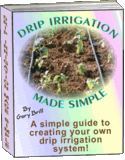 Every year when the local Peaches, Nectarines, Plums and Melons are gone and the Central American or Mexican fruit come in...so do the complaints. And I can't say that I blame them. The "so called" soft fruits are hard as a rock and have absolutely no flavor. Folks love their fruits and melons, but they just can't stand to eat them during the winter months. For some of you folks out there that don't know why...I'll explain it.
Every year when the local Peaches, Nectarines, Plums and Melons are gone and the Central American or Mexican fruit come in...so do the complaints. And I can't say that I blame them. The "so called" soft fruits are hard as a rock and have absolutely no flavor. Folks love their fruits and melons, but they just can't stand to eat them during the winter months. For some of you folks out there that don't know why...I'll explain it. Every grocery store wants shelf life. They don't want "tree ripened" fruit coming in to their store, because they don't get enough shelf life. Tree ripened fruit comes in and for the most part; you have about three days to sell it, or it turns bad. Therefore, when fruits are grown in Chili, Costa Rica, Honduras or Mexico, they are picked very green. Most of the fruit will have no color at all. The growers and packers want them to look pretty for sale; therefore, they will place those fruits into a large room where they will be gassed. Now I won't go into all the scientic jargon about what this gas does to your fruit, so I'll give it to you in laymens terms. The gas kills any bugs that come on the fruit and it excites the enzymes in the fruit which causes it to continue to change color. The packing houses' will however, call it a ripening process. I say "bull-hockey."
Basically all that happens to the fruit is that it begans to change color so that the peach looks more like a peach. They go through this process so that the soft fruit that you purchase in the winter will look nice and pretty. And of course; as a consumer; you like to see pretty. It "excites your enzymes to buy" so to speak. Then you take them home thinking that you are going to sit them on your kitchen counter for a couple of days and they will be great. Afterall; they sure look pretty. After a couple of days the fruit continues to change color and you think it's ready to put into your cornflakes. But when you start eating it, you then realize that the Peach still has no flavor and it's still hard as a rock. And then you come into me and say "Gary; them dog-gone Peachs you sold me the other day taste like cardboard and they never do ripen up. Ok! You've got the skinny on why...now let me try and help fix it..
After you have purchased those foriegn fruits; get yourself a small paper sack from the cashier. Don't be bashfull...just ask the cashier for one. The store owes it to you for selling you an inferior product anyway. When you get home; put those peach's, nectarines and plums into the sack with a BANANA PEEL. Not the whole banana...just the peeling. Fold the paper sack down until it's fairly close to the fruit and then sit it on the counter. You can do this with canaloupe and honey dew mellons also. And be sure to do it with those tasteless Mexican tomatoes too.
Now to explain why and what is happening in that sack. The banana peel emmits a gas (much like the gas they use to excite the enzymes in fruit) and it continues to excite the enzymes in the fruit. Except when it is done in this manner; the fruit continues to ripen much like when left on a tree or bush to ripen. Not only will the fruit continue to change color, but the fruit will soften as well. Mexican tomatoes are famous for having no flavor. Follow this procedure and you will have more flavorful tomatoes. Now please understand...this fruit is still not going to taste as good as it would if it was vine ripened, but it will certainly be more tolerable. I will however, give you a couple of hints about using this method. Do Not Use a Plastic Bag...it has to be paper. And don't leave your fruit in the bag for more than about two days, or you will end up with rotten fruit. I hope this tip has helped a few folks out there who love their soft fruits and mellons. Good Luck!
Read more!











